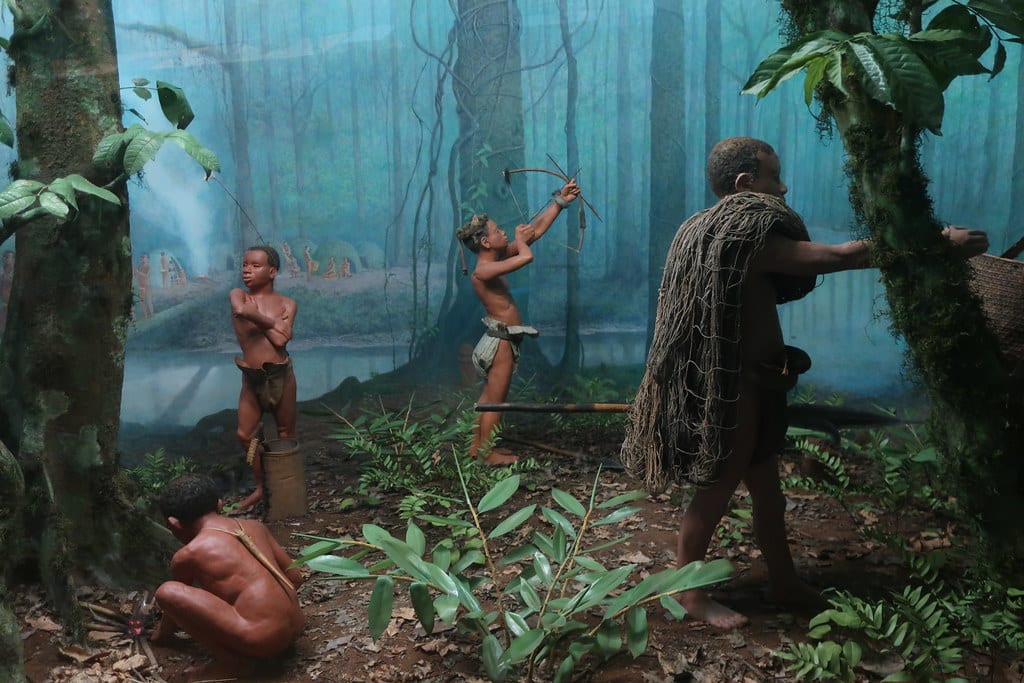
The Pygmies, an indigenous people primarily residing in the rainforests of Central Africa, are known for their unique physical trait—short stature. On average, Pygmies are considerably shorter than most other human populations. The reasons behind their shorter height are a topic of much curiosity and intrigue. In this essay, we will delve into the multifaceted factors that contribute to the diminutive stature of Pygmies, aiming to convince the reader that their height is a result of a combination of genetic, environmental, and evolutionary factors.
Genetic Factors
One of the fundamental aspects that contribute to the shorter stature of Pygmies is their genetic makeup. Genetic factors play a significant role in determining an individual's height, and this is no different for Pygmies. In fact, various studies have shown that Pygmies carry specific genetic adaptations that have evolved over generations in response to their unique environment.
A noteworthy genetic adaptation related to their height can be traced to their growth hormone receptor (GHR). Pygmies often exhibit a genetic variant of the GHR gene, which affects their responsiveness to growth hormones like insulin-like growth factor 1 (IGF-1). These genetic variations are believed to have evolved as an adaptation to the resource-scarce environment in which Pygmies have traditionally lived. In such an environment, shorter stature might be advantageous, as it would require fewer resources to maintain.
Furthermore, some studies have suggested that these genetic adaptations also play a role in slowing down the aging process among Pygmies. This could be seen as a trade-off for their shorter stature, as it potentially provides them with a longer, healthier life. Thus, it is evident that genetic factors are a significant determinant of Pygmy height.
Environmental Factors
In addition to genetic factors, the environment in which Pygmies have lived for generations has played a crucial role in shaping their shorter stature. The rainforests of Central Africa, where many Pygmy groups reside, are characterized by dense vegetation, limited access to sunlight, and a lack of abundant food resources. These environmental conditions have influenced the growth and development of Pygmies in several ways.
Nutritional Limitations: The rainforest environment presents numerous challenges in terms of accessing a diverse range of food sources. Pygmies traditionally rely on hunting and gathering for sustenance. While they have an intricate knowledge of the rainforest and its resources, their diet is often limited in terms of variety and quantity. This limited access to a consistent, well-balanced diet can have a significant impact on their growth and height.
Sunlight Exposure: Adequate exposure to sunlight is crucial for the synthesis of vitamin D, which is essential for bone health and growth. The dense canopy of the rainforest significantly restricts the amount of sunlight that reaches the forest floor. Pygmies, therefore, have limited exposure to sunlight, which can affect their ability to produce vitamin D and, consequently, influence their bone development and overall stature.
Pathogen Load: The rainforest environment is also known for its high pathogen load. Pygmies face a greater risk of infectious diseases due to their close interaction with the rainforest ecosystem. These diseases can lead to malnutrition and stunted growth, further contributing to their shorter stature.
Cultural Practices: Some cultural practices among Pygmy communities, such as early marriage and childbearing, may also play a role in their height. These practices can result in a shorter period of growth during adolescence, leading to a shorter final height.
Evolutionary Factors
The evolution of Pygmy stature is a complex and fascinating process that has taken place over thousands of years. Evolutionary pressures in the rainforest environment have influenced the genetic traits and adaptations of Pygmies, including their shorter stature. It is essential to understand the interplay of these factors to convince the reader of the reasons behind Pygmy height.
Survival Advantage: It is hypothesized that the shorter stature of Pygmies provides certain survival advantages in their rainforest environment. Shorter individuals may be better adapted to navigating the dense undergrowth of the forest and evading predators. Additionally, a smaller body size could require fewer calories to sustain, which is advantageous in a resource-scarce environment.
Thermal Regulation: The rainforest environment is characterized by high humidity and temperatures. Shorter individuals may have an advantage in regulating their body temperature more efficiently than taller individuals, as a larger surface area-to-volume ratio allows for better heat dissipation.
Conclusion
In conclusion, the short stature of Pygmies is a result of a complex interplay of genetic, environmental, and evolutionary factors. While their genetic adaptations, such as variations in the GHR gene, play a role in their height, the challenging rainforest environment has also contributed significantly. Limited access to a diverse diet, reduced exposure to sunlight, and a higher pathogen load have all influenced Pygmy growth and development. Moreover, the evolution of Pygmies in response to the unique demands of their environment has shaped their stature, providing them with potential survival advantages.
Understanding the factors behind Pygmy height offers insights into the intricate relationship between genetics, environment, and evolution. It serves as a compelling example of how human populations adapt to their surroundings over generations. By exploring the multifaceted nature of Pygmy stature, we can appreciate the remarkable ways in which human beings have evolved and thrived in diverse environments, demonstrating the resilience and adaptability of our species.
About the Creator
Elias
Reading serves as a gateway to knowledge, offering a vast universe of ideas, information, and inspiration waiting to be explored. It is a powerful tool that opens doors, ignites curiosity, and fuels personal and intellectual growth.






Comments
There are no comments for this story
Be the first to respond and start the conversation.